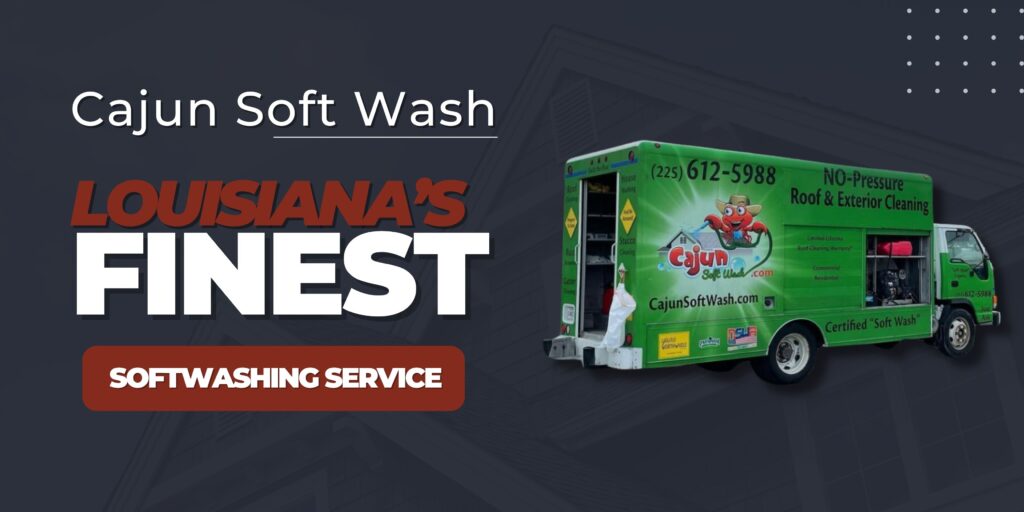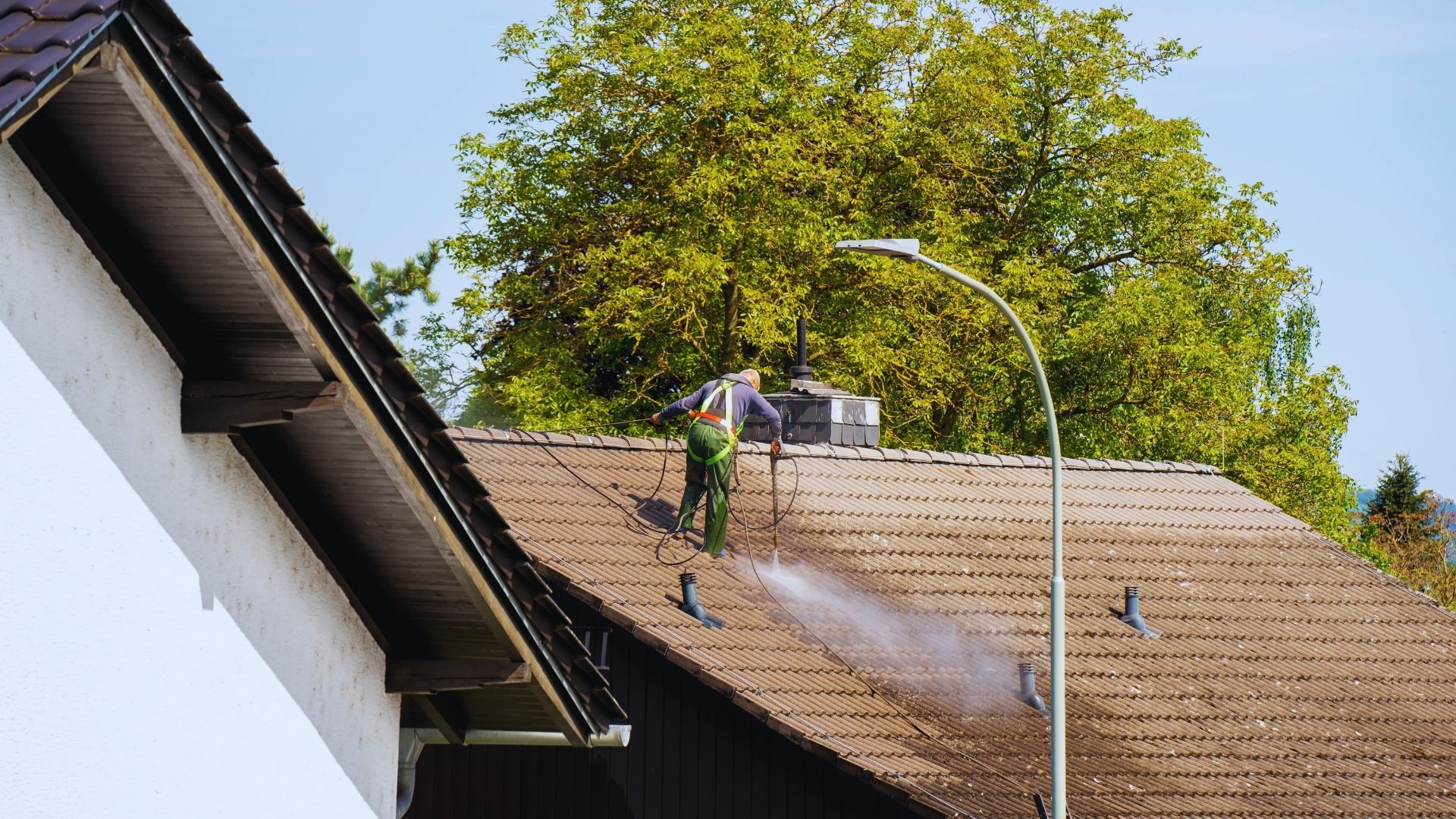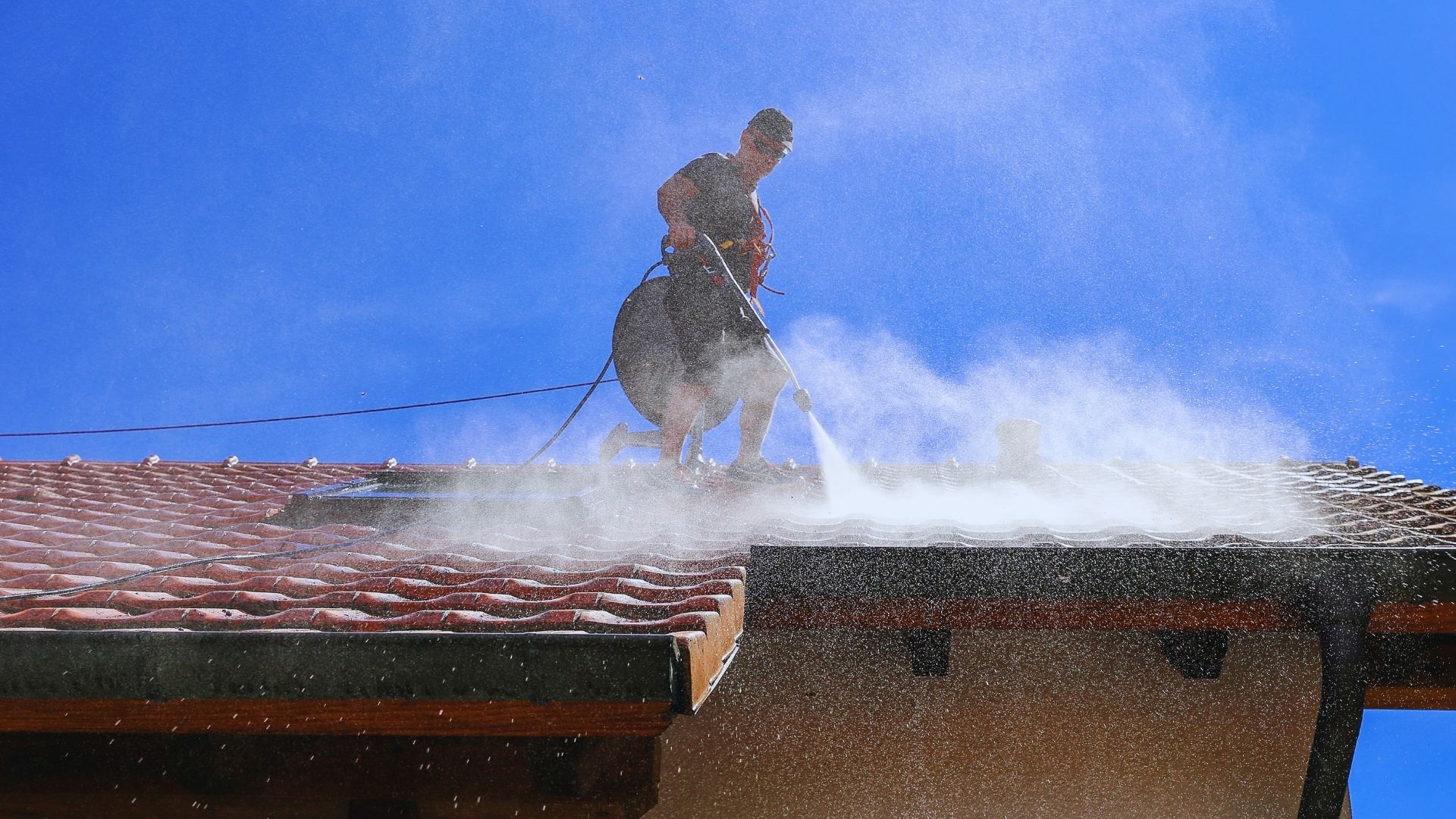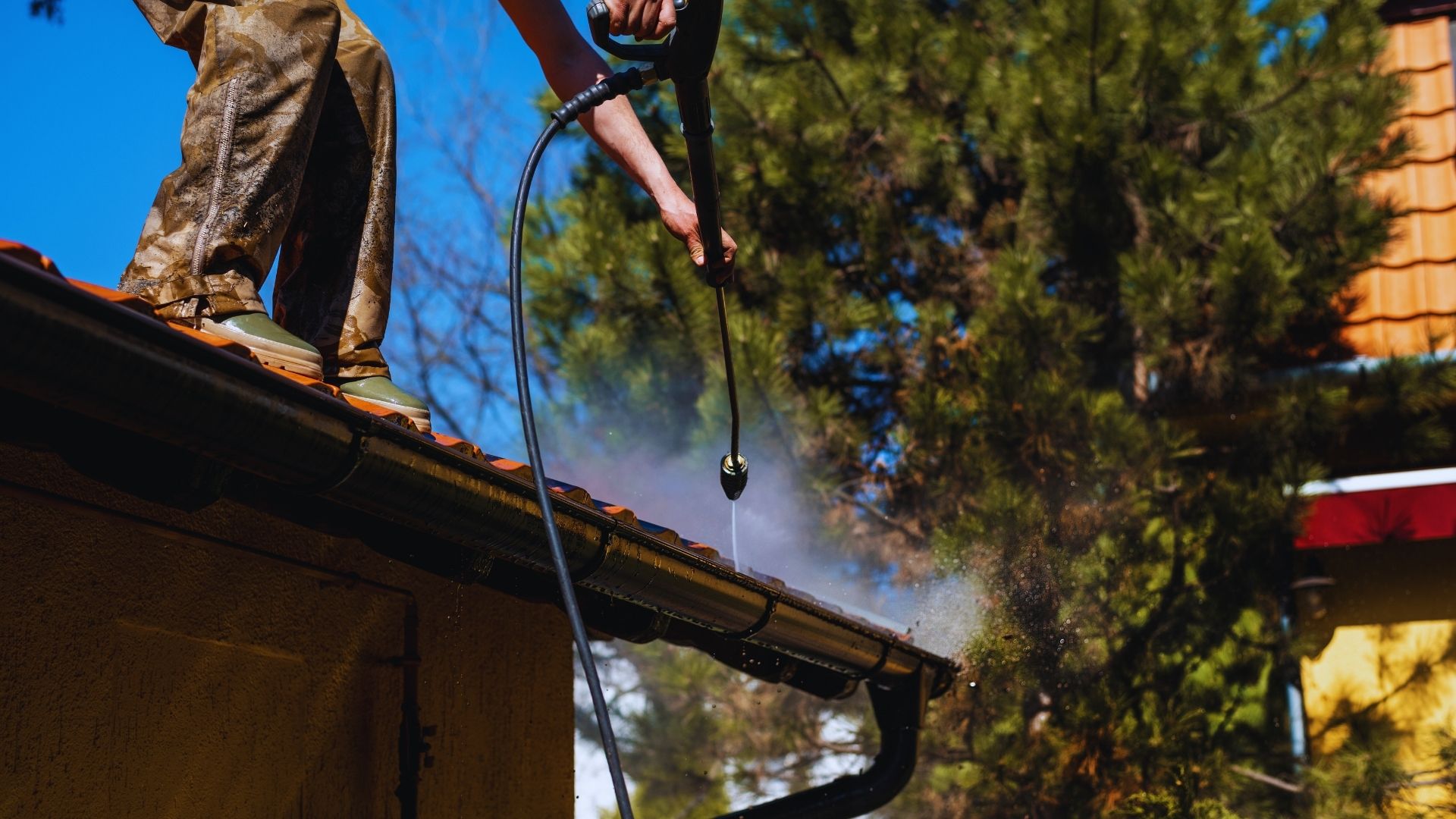Nearly half of all homes in America have mold problems. We’re talking about 47% of residential buildings dealing with this stuff right now. Even more concerning? Around 21% of asthma cases get traced back to mold and dampness in living spaces.
Property values take a serious hit too. Homes with mold issues see their resale value drop anywhere from 20% to 37%. And fixing the problem isn’t cheap either, most homeowners spend between $1,400 and $3,300 getting rid of it.
The question of what kills mold and mildew matters because this fungus doesn’t mess around. Give it 24 hours with some moisture, and it’s already setting up shop.
Different Surfaces Need Different Approaches When Figuring Out What Kills Mold and Mildew
Not all surfaces are created equal when dealing with mold. Things like tile, glass, and metal are non-porous, meaning they don’t soak up water. Spray something on there, and it stays on the surface where you can actually reach the mold.
Drywall, wood, and fabric? That’s a different story. These materials act like sponges. Water gets in deep, and mold roots follow. Cleaning the surface might make things look better temporarily, but those roots are still down there, ready to come back. That’s why bathroom walls keep getting moldy even after scrubbing them down with bleach.
The absorption issue gets worse over time. Once mold digs into wood or drywall, surface treatments barely touch it. The stuff just keeps growing underneath while the surface looks clean for a week or two.
The Most Effective Solutions for What Kills Mold and Mildew on Exterior Surfaces
Professionals don’t use the same watered-down bleach spray homeowners grab from the store. They’ve got access to commercial-grade sodium hypochlorite that actually penetrates and kills mold at the root level. But concentration and timing matter. Too weak and it doesn’t work; too strong and surfaces get damaged.
The game-changer in exterior cleaning is soft washing. Instead of blasting surfaces with high pressure (which can force water deeper into materials and spread spores everywhere), low-pressure application lets chemicals do the heavy lifting. This works exceptionally well for roof cleaning since shingles can’t handle aggressive pressure without losing granules or getting damaged.
Soft washing changed how the industry handles delicate surfaces. Before this technique became standard, pressure washing caused plenty of damage—knocked siding loose, cracked stucco, and wore down roof shingles years before they should’ve failed.
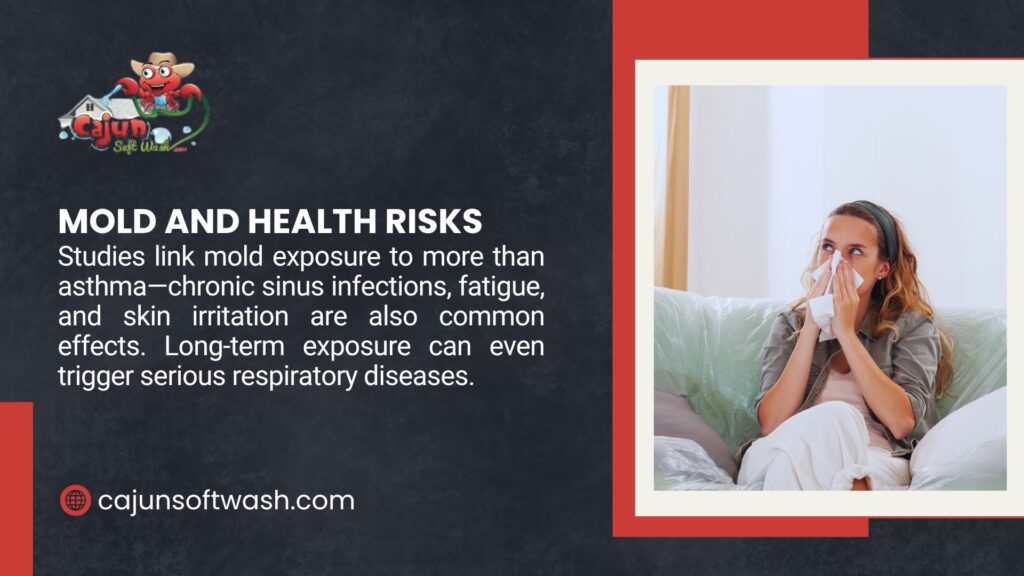
Chemical Options that Work
Quaternary ammonium compounds are workhorses for mold removal. These chemicals punch holes in cell membranes, killing existing growth while leaving behind protection against new colonies. They’re particularly good on stucco because the extra contact time helps them soak into all those nooks and crannies.
Most professional soft washing chemicals mix several active ingredients. Surfactants reduce surface tension so solutions spread evenly instead of beading up. Algaecides prevent quick regrowth—nobody wants to clean their roof twice in one year.
| Treatment | How Well It Works | What It’s Good For | Downsides |
| Bleach (Sodium Hypochlorite) | Kills 90-99% of mold | Hard surfaces, outdoor stuff | Doesn’t soak into porous materials, kills plants |
| Hydrogen Peroxide | 80-95% effective | Works on most surfaces, won’t bleach colors | Doesn’t last long, might need multiple treatments |
| Quaternary Ammonium | 85-98% kill rate | Long-lasting prevention | Costs more, needs proper equipment |
| Professional Soft Wash | 95-100% removal | Complete exterior cleaning, delicate areas | Requires pros with the right gear |
Tackling What Kills Mold and Mildew on Roofs and Similar Problem Areas
Use the wrong approach, and the warranty gets voided. Choosing between different cleaning methods depends on roof material, how bad the contamination is, and preventing it from coming back.
Asphalt shingles cover most residential roofs. They respond well to soft wash treatments that eliminate algae without compromising the shingle structure. The chemicals break down organic growth at the cellular level, then low-pressure rinsing washes away the dead material. Proper technique makes the difference between a roof that stays clean for years and one that needs retreating every season.
Why Concrete and Masonry Need Special Attention
Concrete soaks up water like a sponge, creating perfect conditions for mold to burrow deep. Driveways, pool decks, and walkways all share this problem. Surface cleaning barely scratches the surface. The mold roots go deep into the porous concrete matrix.
Those black spots on concrete indicate established colonies with extensive root systems embedded in the concrete. Getting rid of them requires chemicals that penetrate without eating away at the concrete itself. Sometimes mechanical action helps, but the chemical treatment does most of the work.
Pool deck pressure washing combines chemical treatment with controlled pressure. The chlorine environment around pools helps prevent some growth, but areas that don’t get splashed regularly still develop problems.
Problem Spots that Need Extra Attention
Some areas collect moisture and grow mold faster than anywhere else on the property. Awnings trap humidity underneath, creating microclimates perfect for fungal growth. Pergolas face similar issues.
Fences get hit from both sides. Rain from above, ground moisture from below, and wood that naturally absorbs everything. Wooden fences rank among the hardest exterior features to keep mold-free. They need regular treatment and good drainage around the base.
North-facing walls almost always have more mold than other sides of buildings. Less sun means surfaces stay damp longer. Trees and bushes close to walls create shade and trap moisture against siding. These factors combine to create mold paradise.
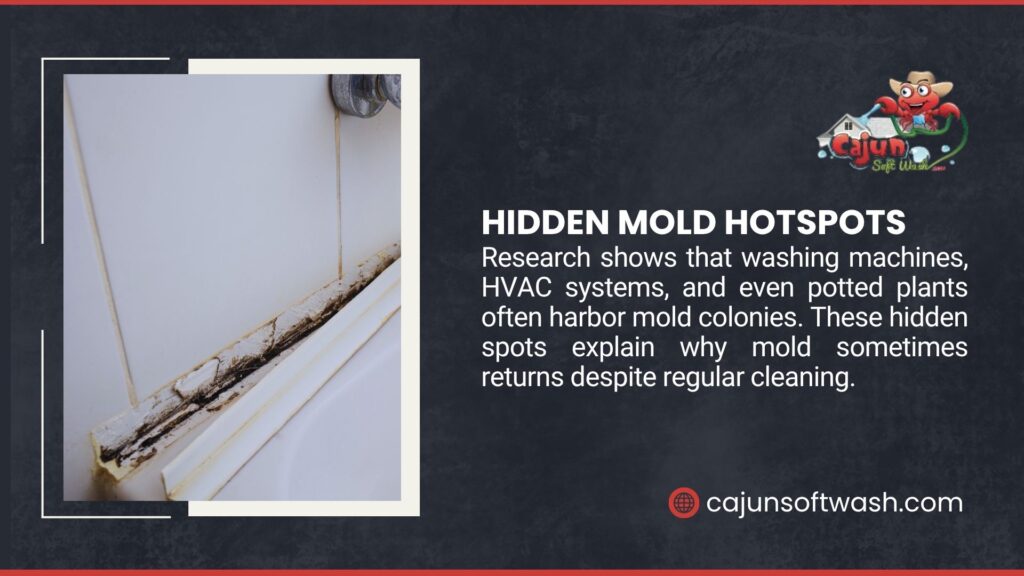
Prevention Strategies
Killing existing mold only solves half the problem. Without addressing why it grew there in the first place, it’ll be back within weeks. Moisture control beats any cleaning chemical for long-term prevention. Fix the water source, and mold struggles to establish itself.
Gutters cause more mold problems than most people realize. Clogged gutters overflow, dumping water directly against walls and foundations. That creates the damp conditions mold loves.
Knowing the difference between moss and algae helps identify problems early. While they’re different organisms, they signal similar moisture issues. Spotting one usually means conditions exist for the others too.
| Prevention Method | What To Do | Results |
| Better drainage | Clean gutters, extend downspouts, fix yard grading | Cuts moisture-related growth by 60-80% |
| More airflow | Add soffit vents, ridge vents, space things away from walls | Reduces fungal growth by 40-60% |
| Regular pro cleaning | Schedule soft washing once or twice yearly | Stops colonies before they dig in deep |
| Protective coatings | Apply anti-microbial sealers | Longer periods between cleanings needed |
Natural Alternatives and Their Limitations
Vinegar solutions get recommended frequently for mold removal. While acetic acid does kill many mold species, effectiveness tops out around 80%. That remaining 20% survives and regrows. For small surface areas, vinegar works reasonably well. For established colonies or porous materials, it’s not strong enough.
Homemade cleaners mixing borax, baking soda, and other household chemicals offer mild cleaning power. They’re safer than industrial chemicals but require more applications to achieve similar results. The convenience factor drops when needing to retreat surfaces every few weeks.
Cleaning stucco with vinegar illustrates these limitations perfectly. Light mildew on exterior stucco might respond to vinegar treatment. Heavy mold colonies embedded in the textured surface? Vinegar barely makes a dent. Expectations need to match the treatment strength.
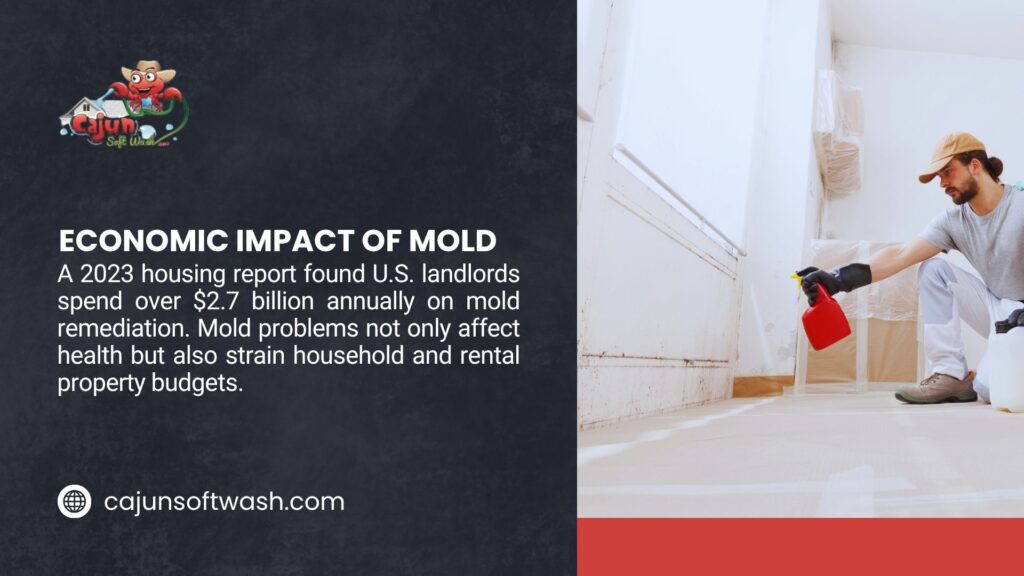
Get Professional Mold and Mildew Removal
Dealing with mold isn’t something to mess around with. Half-measures waste money and time while the problem keeps getting worse. Professional treatment combines the right chemicals, proper equipment, and experienced technicians who know how to get lasting results.
Property values and family health depend on controlling mold effectively. Stop letting it spread and damage surfaces while creating health risks. Professional assessment identifies all affected areas and implements solutions that actually work.
Schedule Your Professional Cleaning Now


